10 Secrets of Grand Central Terminal
More than 750,000 people pass through New York City’s famed Grand Central Terminal every day. Of those, approximately 20,000 are visitors. As such, GCT has become the second most-visited site in the city, next to Times Square.
It’s important to note the GCT is a terminal, not a station. Yes, there is a Grand Central Station, but that’s the subway stop that serves GCT. “There’s a big difference,” says Daniel Brucker, manager of Grand Central Tours for the Metropolitan Transit Authority, the organization that oversees operation of GCT. “Trains terminate here; they stop here.”
But GCT isn’t just any terminal. It’s the world’s largest terminal, covering 49 acres from 42nd Street north to 97th Street. Its massive main concourse, as 22,000 square feet, is just a pin dot compared with the total size of the entire structure. In addition, GCT features 45 tracks that serve 63 platforms, and during the morning rush hour, trains arrive every 58 seconds.
During my years in New York, I traversed GCT more times that I can count, rushing to catch a train or meeting with friends, but like most commuters, I never really stopped to appreciate the historic structure and all that it had to offer. But beyond the obvious array of stores and restaurants, GCT is home to a number of secrets that even the most die-hard New Yorkers don’t know. Here are 11 of them.
1. Look closely, and you’ll notice that just about every surface in Grand Central Terminal, including the chandeliers, is decorated with acorns and oak leaf clusters. This was the family symbol of the Vanderbilts, who built the terminal. They adopted the accord as their own, with the motto, “From the little acorn, a mighty oak grows.”
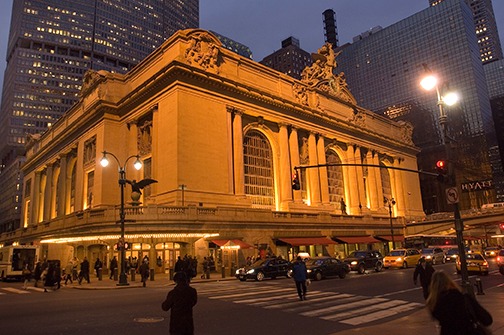

2. In the center of the main concourse, atop the information booth, sits a large clock, one of GCT’s most-photographed details. But what most people don’t realize is that the clock is worth between $10 million and $20 million. That’s because each of the clock’s four faces is carved from a solid piece of precious opal.
3. The grand Sky Ceiling in the main concourse depicts the constellations from Aquarius to Cancer in an October sky. But a closer looks reveals that the constellations are painted backwards. According to reports, workers mistakenly looked at the diagram on the floor and copied it from there, rather than holding it up to the ceiling. When the Vanderbilt family learned of the mistake, they maintained that the ceiling reflected God’s view of the sky.
4. On the Sky Ceiling is a small, dark circle just above Pisces. This hole dates back to the space race in 1957 when the terminal played host to a redstone missile. The rocket was so tall that a hole had to be cut in the ceiling so that it could be lifted into place. Historic preservation dictates that the hold remain to remind people of the terminal’s many uses over the years.
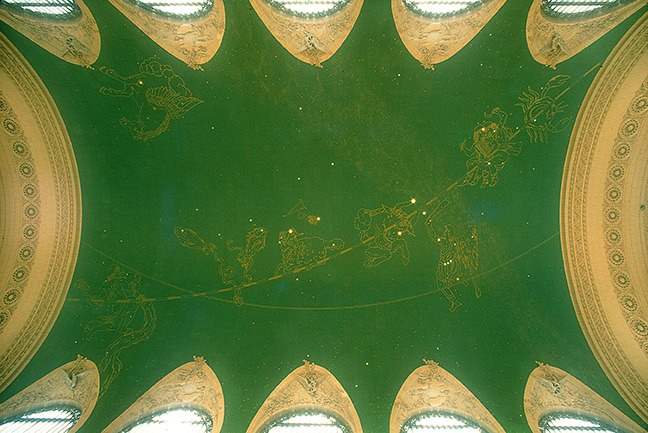
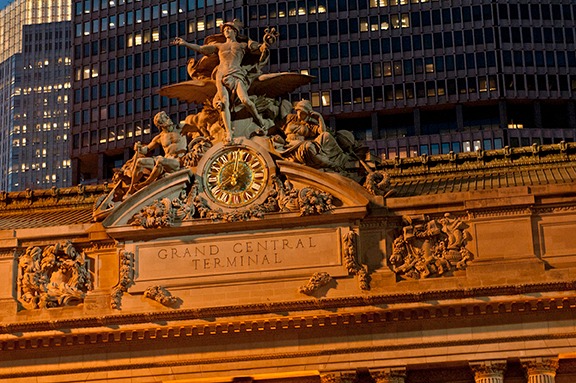
5. On the building’s façade, above the main entrance at 42nd Street, is a large 13-foot clock flanked by sculptures of Greek gods Hercules, Minerva and Mercury. It is the world’s largest Tiffany-made clock; neon lights inside the hands illuminate the time for New Yorkers below.
6. Grand Central Terminal operates the world’s most successful Lost and Found. About 25,000 items are turned in each year, and the department has a return rate as high as 80 percent.
7. Stand in the rotunda outside the Oyster Bar for a few minutes, and you’ll notice people lining up to stand in the corners. This is GCT’s famed “Whispering Gallery.” Messages whispered into one corner of the rotunda will travel along the vaulted ceiling into the ear of the person on the other side.
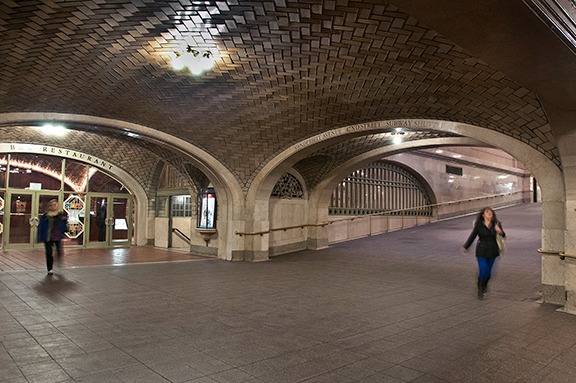
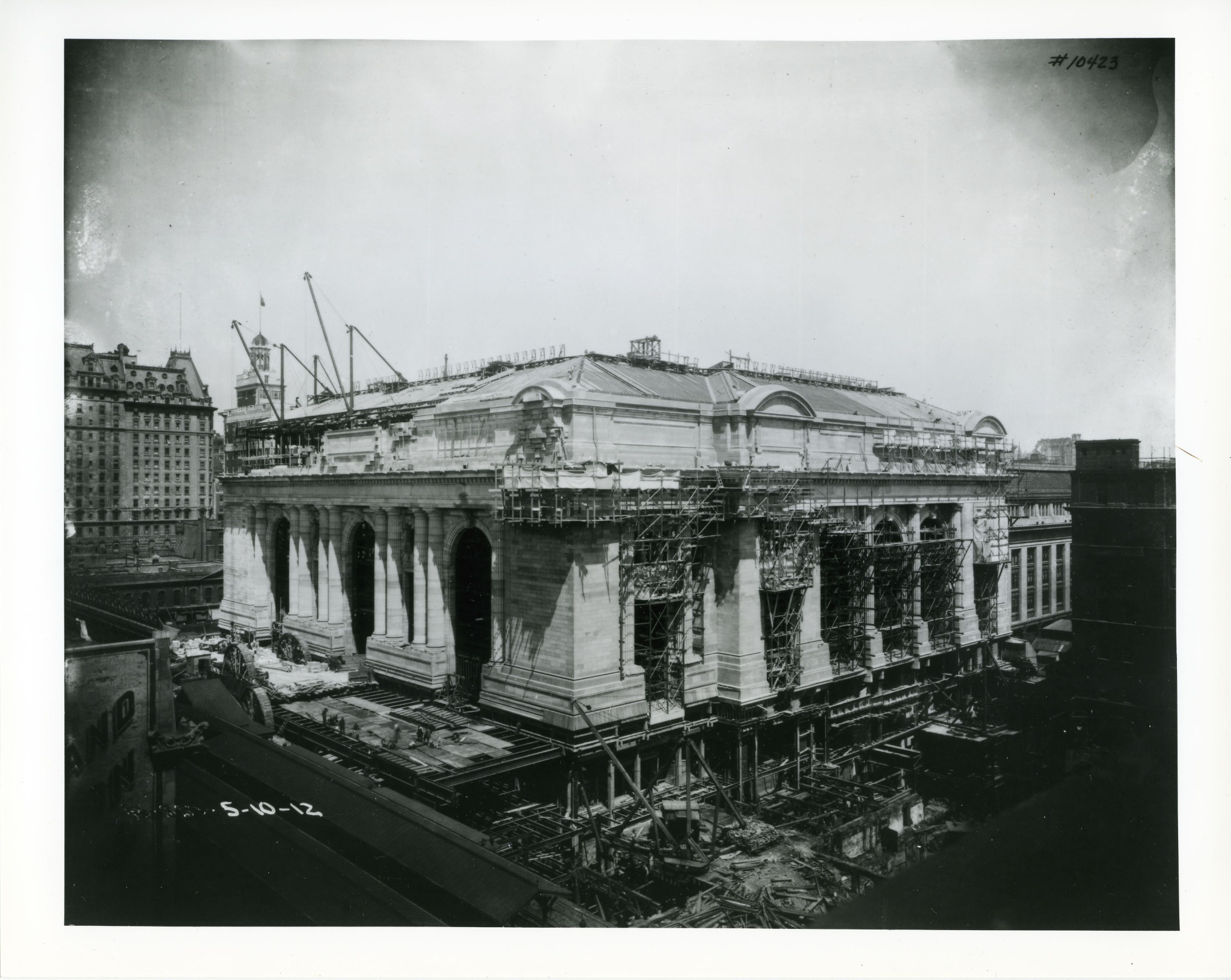
8. On either side of the main concourse are grand marble staircases modeled after those in the Paris Opera House. When GCT was originally built, there was only one staircase, on the western side bordering Vanderbilt Avenue. The second staircase on the eastern side was built during renovations in the 1990s. While it looks identical, it is actually one inch narrower than the original staircase.
9. Another staircase is located in the main concourse, but most visitors will never even notice it. That’s because it’s hidden in the middle of the information kiosk. Tucked away behind a brass cylindrical door, this spiral staircase allows GCT employees to quickly get to the information booth on the lower level.
10. Buried within GCT’s 49 acres is a secret train station build during the 1930s. Featuring a 50-foot-long concrete platform that leads to an elevator that’s barely 6 feet wide but 24 feet long, it was commissioned for Franklin D. Roosevelt. Few Americans knew that their president had polio—it was even kept from the press—so when he would travel to New York, he would arrive on his own private train that carried his Pierce-Arrow limousine. Roosevelt would be driving off the train, onto the platform beneath the Waldorf-Astoria hotel, and into the elevator, which would bring him up to the public. Today, Roosevelt’s armor-clad train car still sits in the tunnel beneath GCT.

Unless noted, all photos courtesy of the Metropolitan Transportation Authority.
0 Comments Add a Comment?